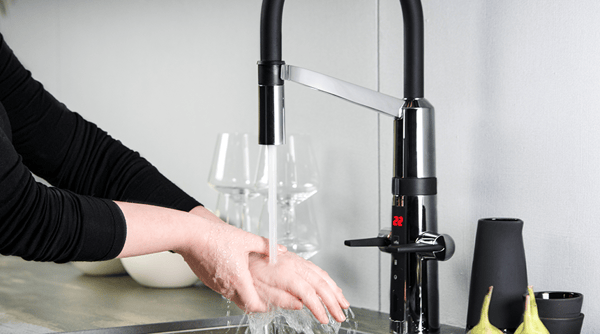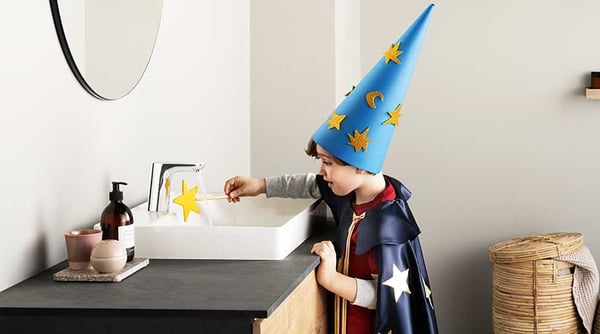We use and rely on faucets every day. But, as much as we keep them clean, they can still be a breeding ground for germs and viruses. To improve our health and safety, something needs to change.
We use our faucets countless times a day – whether we’re washing dishes, filling up a water bottle, cleaning our hands, or doing any of the other seemingly mundane tasks we require them for.
What we’ve only just started to become aware of, however, is how many germs can form on and around a faucet – not just those in public spaces, but right at home – and the health challenges posed by this.

It sounds scary – and it can be – but it makes sense. You can’t wash dirty hands without physically touching a manual faucet, and chances are we wipe them down with cloths that aren’t fully clean. So, it’s understandable for germs to form – and grow. But how many can be a surprise.
While studies vary, the overall result is the same: that our kitchen and bathroom faucets harbour a huge number of germs. Indeed, according to this 2004 study from the International Journal of Food Microbiology, a traditional faucet generally contains 127,000 bacteria per cm2.
And, given the average family of four turns on their faucets 200 times a day, that’s a lot of exposure to potentially harmful environments.
A family of four turns on their water
200 times every day.
So, how can you reduce your risk of catching an infection without disrupting your daily life? While making things easier?
Get a handle on germs – with touchless faucets
That’s where touchless faucets come in.

The most common migration routes for microbes spreading contact infections are from hands and surfaces – making good hand hygiene absolutely vital.
It’s why, at Oras, we’re so focused on creating solutions that stop the issue at the root. By eliminating the need for any contact. And no contact means a reduction in germs.
A vast amount, as it happens. According to a study carried out by WANDER Nordic Water and Materials Institute, switching to a touchless faucet could reduce the incidence of microbes by as much as 98% compared to a manually operated faucet. Similarly, a 2008 study from the institute comparing new generation electronic and manual faucets in a hospital setting found there to be fewer microbial biomass in the electronic faucets’ aerators.
Switching from a manual to a touchless faucet
can stop 98% of bacteria from forming
Sustainable change made smart
At Oras, we’ve spent decades designing touchless, smart faucets that can improve your safety while making your life simpler – and more sustainable.
Because there are other things to consider aside from ensuring your hands are as clean as possible. Take the act of switching off a faucet, for example. You might use a paper towel to push down the handle. But what about the water that’s wasted in the process? Or the germs spread further around as a consequence of every extra bit of contact?
With patented Position Sensitive Detector sensors in all our touchless faucets, keep your hands clean – and fight back against germs – without ever having to worry about using more water than you need.
For clean hands and a clear mind.

-block-desktop-860x480.jpg?width=940&name=40210_Hansa_Vantis_Style_Basin01_Hansa_Vari_oh_IR.tif(1)-block-desktop-860x480.jpg)

-block-desktop-860x480%20(1).jpg?width=940&name=Oras_Romantic_V3.jpg(1)-block-desktop-860x480%20(1).jpg)



